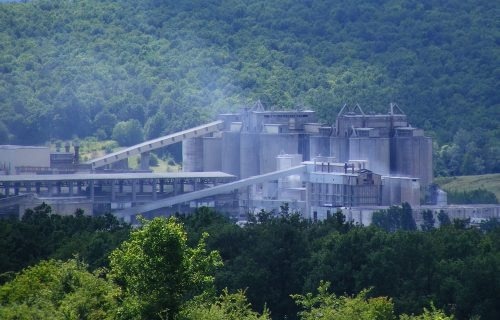Chemical engineers at the University of Illinois Chicago are looking into new ways to minimize carbon dioxide emissions from cement production.

Image Credit: Emilian Robert Vicol from Pixabay
Cement is among the most widely used construction materials, but its production accounts for up to 8% of global carbon dioxide emissions, posing a significant challenge to the objective of lowering climate change. Despite continued attempts to investigate renewable energy options and new cementation techniques, there is currently no clear route to carbon-neutral cement manufacturing at this time.
UIC researchers and collaborators from the University of Wisconsin-Madison and Pennsylvania State University are aiming to change that, thanks to two federal grant awards.
We have a global problem with CO2 emissions, and if you look at all the industrial processes and rank them from highest to the lowest in terms of producing CO2, cement manufacturing is at the top. We cannot just stop using it because cement is so crucial for creating buildings, infrastructures, roads, and many other places.
Meenesh Singh, Assistant Professor, Chemical Engineering, College of Engineering, University of Illinois Chicago
The Department of Energy will provide $2.3 million to fund research to enhance a carbon-negative replacement for portland cement, the most frequently used type of cement.
“We hope to turn the widely used and previously carbon-intensive building material into a carbon capture system,” said Singh, co-principal investigator of the DOE award.
The grant is made possible by the Harnessing Emissions into Structures Taking Inputs from the Atmosphere program, which was established to encourage the development of technologies that offset embodied emissions while converting buildings into net carbon storage structures.
Singh’s research team will work on the grant with researchers from UW-Madison and Penn State. The proposed project from the three universities uses carbon captured from the air through a process called distributed direct air capture with rapid mineral carbonation to convert industrial mineral wastes, including coal ash, into a recyclable alternative for portland cement.
The goal is to develop a long-lasting and versatile building material that permanently stores carbon dioxide through a method that extracts more carbon from the air than is emitted.
What we have done with this idea is take a waste material that we then make into a castable cement-like material, which does not release CO2 but actually captures it.
Meenesh Singh, Assistant Professor, Chemical Engineering, College of Engineering, University of Illinois Chicago
UIC is developing a high-throughput system for testing various types and levels of chemicals that can be used with various waste materials.
Another National Science Foundation grant of $1.9 million to UIC, UW-Madison, and Fort Lewis College will encourage the development of a sustainable method of producing calcium hydroxide, a crucial ingredient in cement production.
The process is known as LoTECH, which stands for low-temperature calcium hydroxide procedure. It generates calcium hydroxide from industrial waste streams like crushed concrete and coal ash using a low-temperature ammonia cycle. In fact, cement could be produced in small, dispersed plants or portable units, according to Singh.
According to him, the LoTECH method has the capacity to reduce supply chains and promote sustainability in the concrete industry.
“You can think of this as a closed-looped, modular process,” said Singh, co-principal investigator of the NSF award.
It can be placed in the back of a truck, and wherever you have a supply of concrete after a building is demolished, this system can harvest the waste product and then manufacture new cement right on site.
Meenesh Singh, Assistant Professor, Chemical Engineering, College of Engineering, University of Illinois Chicago
Singh went on to say that sustainable calcium hydroxide could substitute the conventionally used limestone as a calcium source, providing a feasible way to easily reduce the carbon footprint of the existing cement industry by more than half by eradicating the thermal decomposition of limestone.